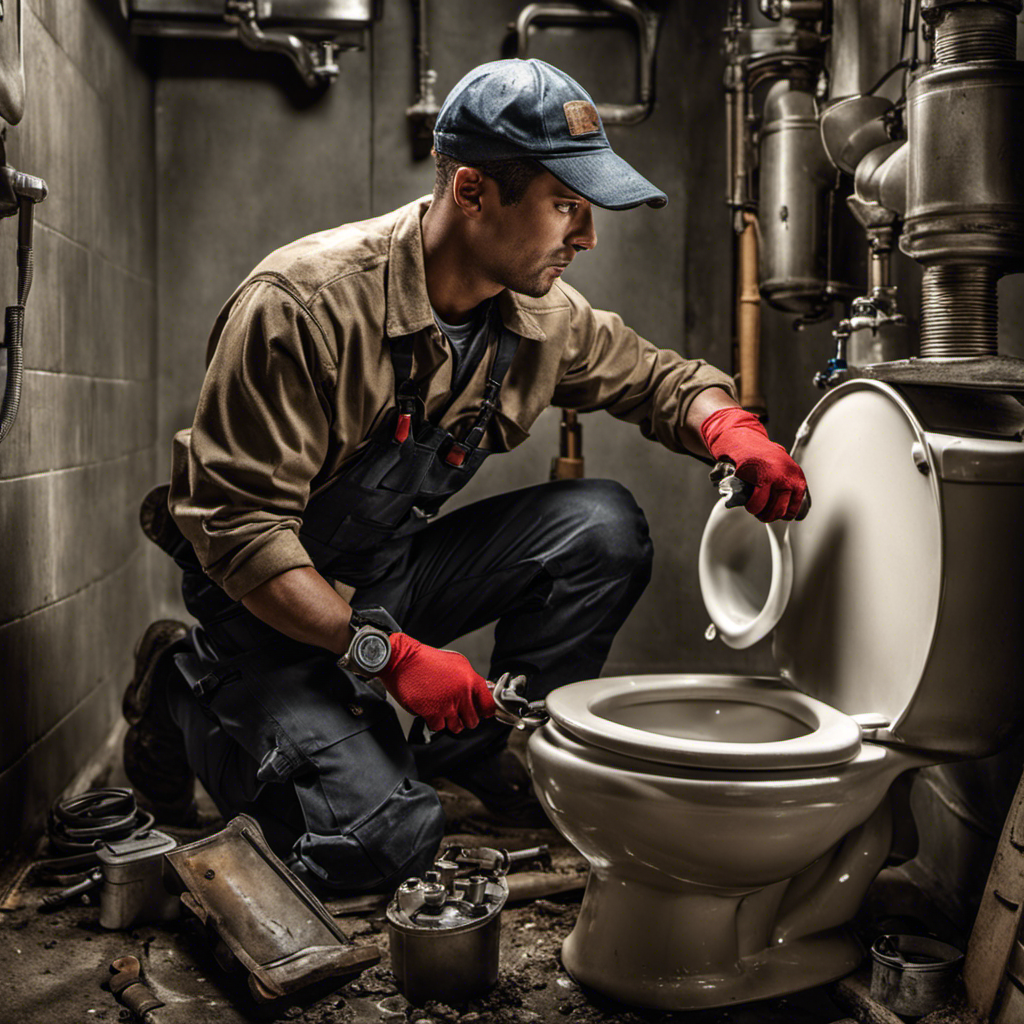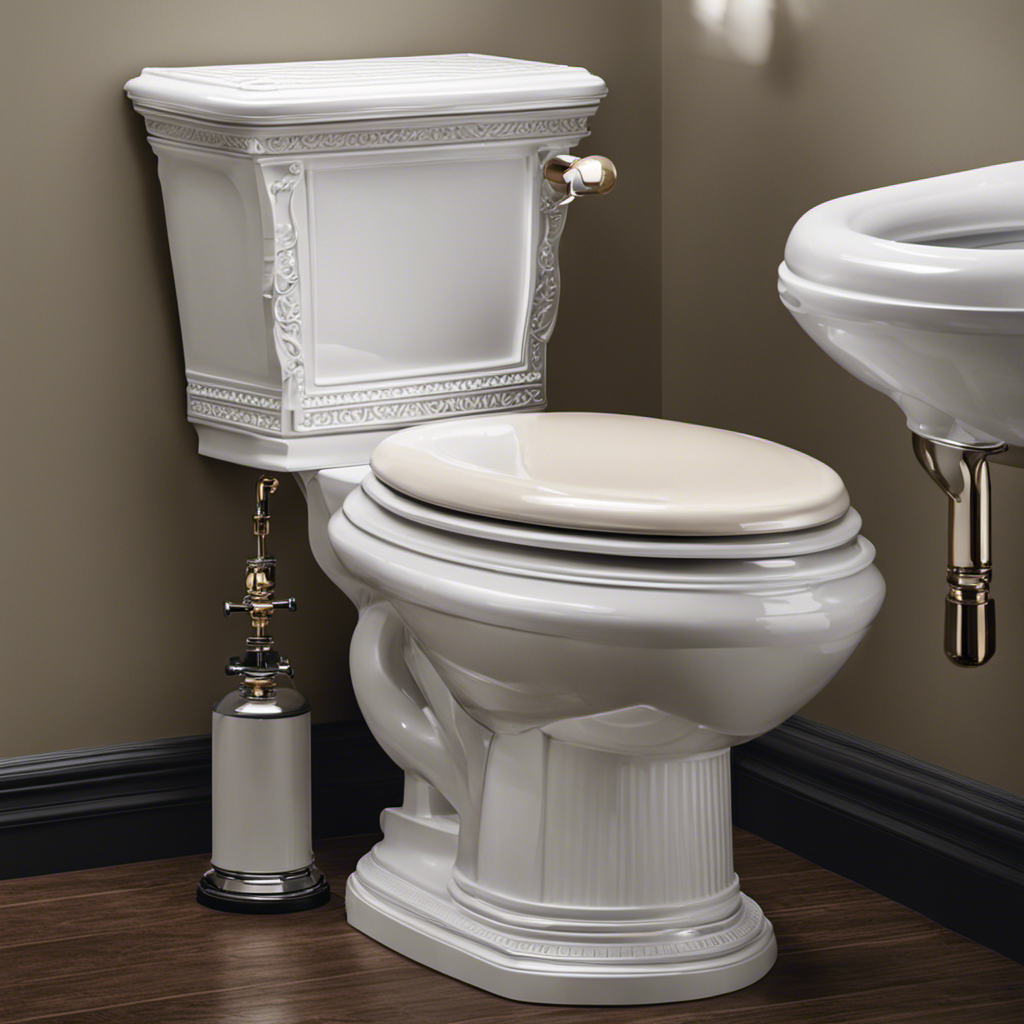Did you know that a running toilet can waste up to 200 gallons of water per day? That’s enough water to fill two bathtubs!
If you’re tired of the constant sound and the rising water bill, then you’ve come to the right place. In this article, I’ll walk you through the step-by-step process of fixing a running toilet.
With just a few tools and some troubleshooting, you’ll have your toilet back to its normal functioning in no time.
Key Takeaways
- A faulty flapper is a common cause of a running toilet.
- Signs of a running toilet include a constant sound of water running and a noticeable increase in the water bill.
- To fix a running toilet, you will need tools such as a toilet repair kit, wrench, pliers, bucket, and necessary components for repair.
- Troubleshooting tips for persistent running include checking for a faulty fill valve, a leak in the flapper seal, and considering DIY repair vs hiring a professional plumber.
Common Causes of a Running Toilet
One common cause of a running toilet is a faulty flapper that you can easily replace. A running toilet can be a nuisance, wasting water and potentially causing higher utility bills. Fortunately, there are signs you can look out for to determine if your toilet is running.
One such sign is a constant sound of water running, even when the toilet hasn’t been flushed. Another sign is a noticeable increase in your water bill without any other explanation. If you observe these signs, it’s important to address the issue promptly.
In the next section, I will discuss the tools and materials you’ll need to fix a running toilet and provide step-by-step instructions on how to do it.
Tools and Materials You’ll Need
To fix a running toilet, you’ll need a few tools and materials.
The first thing you’ll need is a toilet repair kit, which can be found at your local hardware store. These kits usually include a new toilet flapper, a fill valve, and other necessary components. The toilet flapper is often the culprit when it comes to a running toilet, so it’s important to have a replacement on hand.
In addition to the repair kit, you’ll need a wrench, pliers, and a bucket. The wrench and pliers will help you loosen and tighten the necessary connections, while the bucket is essential for catching any water that may spill during the repair process.
With these tools and materials, you’ll be well-equipped to fix your running toilet.
Step-by-Step Guide to Fixing a Running Toilet
Start by gathering the necessary tools and materials to address the issue with your toilet. You’ll need a new toilet flapper, an adjustable wrench, a bucket, and a towel.
First, turn off the water supply to the toilet by closing the shut-off valve located behind the toilet. Flush the toilet to drain the water from the tank.
Next, remove the old flapper by disconnecting it from the flush valve chain. Install the new flapper by attaching it to the flush valve chain and aligning it properly over the flush valve opening.
Adjust the water level by adjusting the float height or by using the water level adjustment screw.
Troubleshooting Tips for Persistent Toilet Running
If your toilet continues to run even after following the previous steps, it may be due to a faulty fill valve or a leak in the flapper seal. These issues can be a bit trickier to fix, but with some patience and the right tools, you can save money on potential toilet repair costs by tackling them yourself. However, if you’re not confident in your DIY skills or simply don’t have the time, hiring a professional plumber is always an option.
To help you make an informed decision, here’s a comparison between DIY and professional repair costs:
| DIY Repair | Professional Plumber |
|---|---|
| Lower cost | Higher cost |
| Time-consuming | Quick and efficient |
| Potential for mistakes | Guaranteed results |
Preventing Future Toilet Running Issues
One way to prevent future toilet running issues is by regularly checking the flapper seal for any signs of wear or damage. The flapper seal is a rubber or plastic component that creates a watertight seal between the tank and the bowl. If it becomes worn or damaged, it can cause water to continuously leak into the bowl, resulting in a running toilet.
To ensure proper toilet maintenance and water conservation, here are some steps you can take:
- Check the flapper seal for any cracks, tears, or warping.
- If any damage is found, replace the flapper seal with a new one.
- Additionally, check the chain connecting the flapper to the flush handle. Make sure it is properly attached and has the right amount of slack.
- Regularly clean the flapper seal and surrounding areas to prevent any buildup or debris that could affect its performance.
- Lastly, consider using a dual-flush toilet or installing a toilet tank bank to reduce water usage.
Conclusion
In conclusion, fixing a running toilet is like taming a wild stallion. With the right tools and materials in hand, you can take control and restore peace to your bathroom kingdom.
By following the step-by-step guide, you’ll swiftly conquer the common causes of toilet running. And if the stubborn stallion persists, don’t fret! Troubleshooting tips will help you navigate any obstacle.
Remember, prevention is key to maintaining a serene throne room. So saddle up, my friend, and bid adieu to the wild ride of a running toilet.










